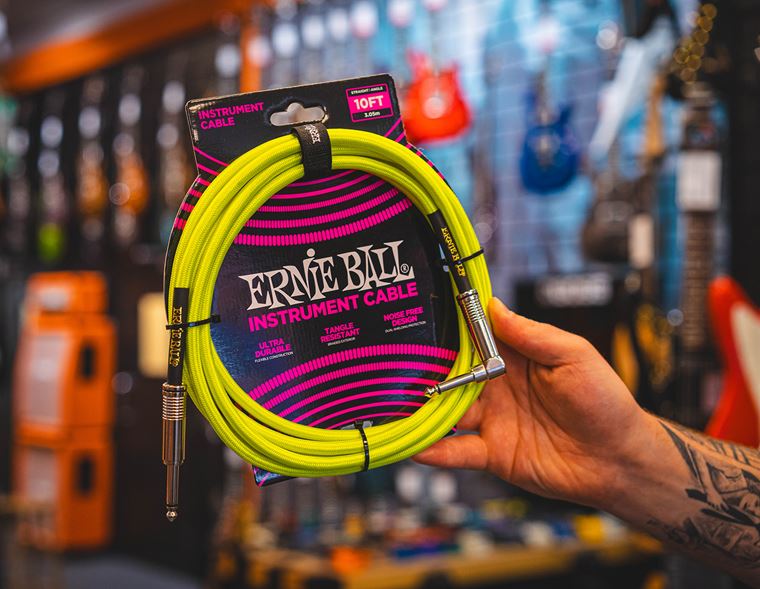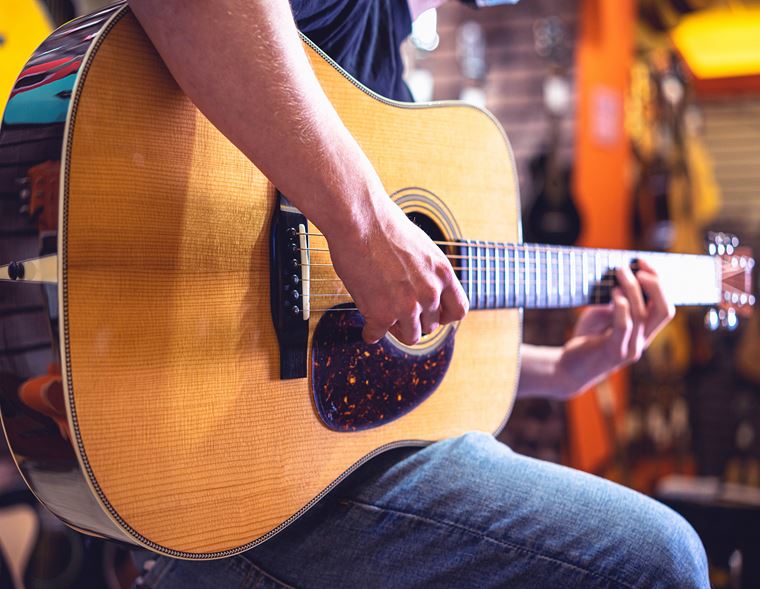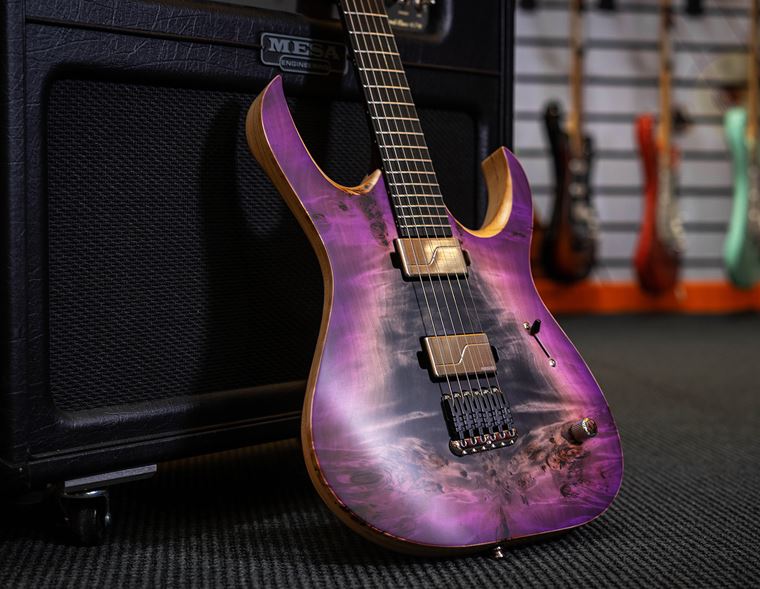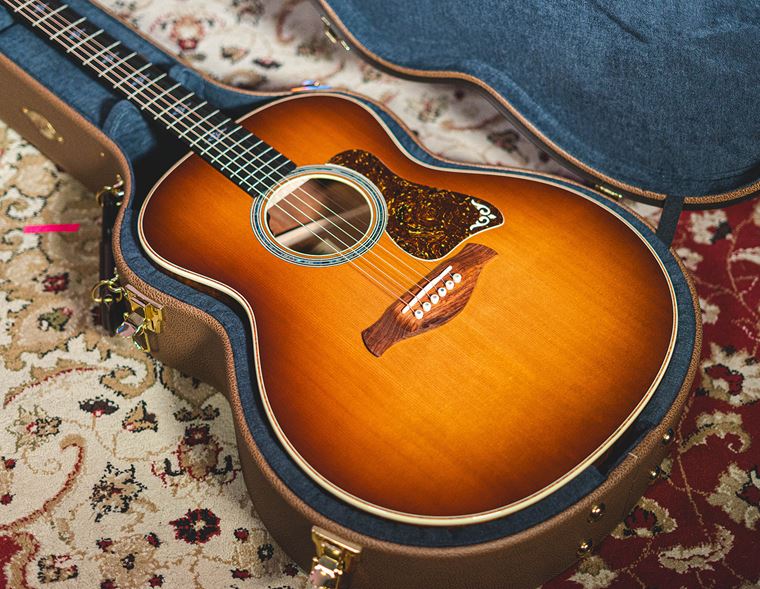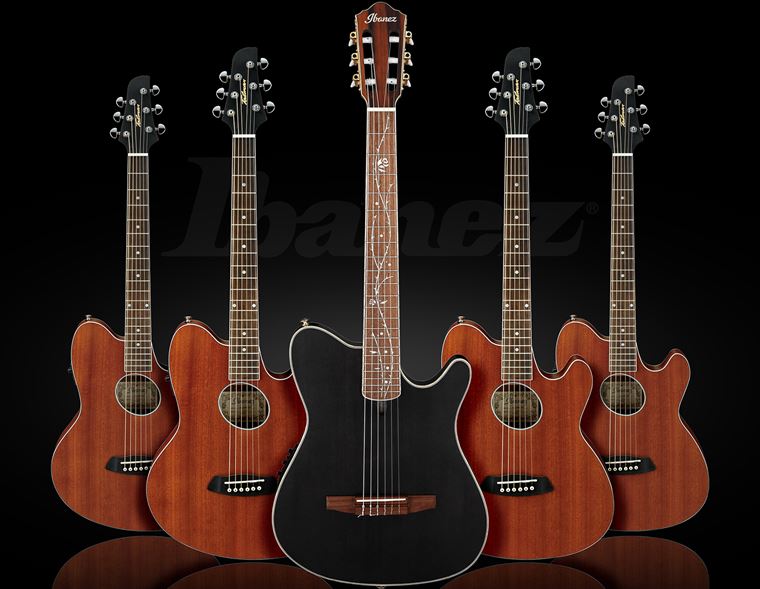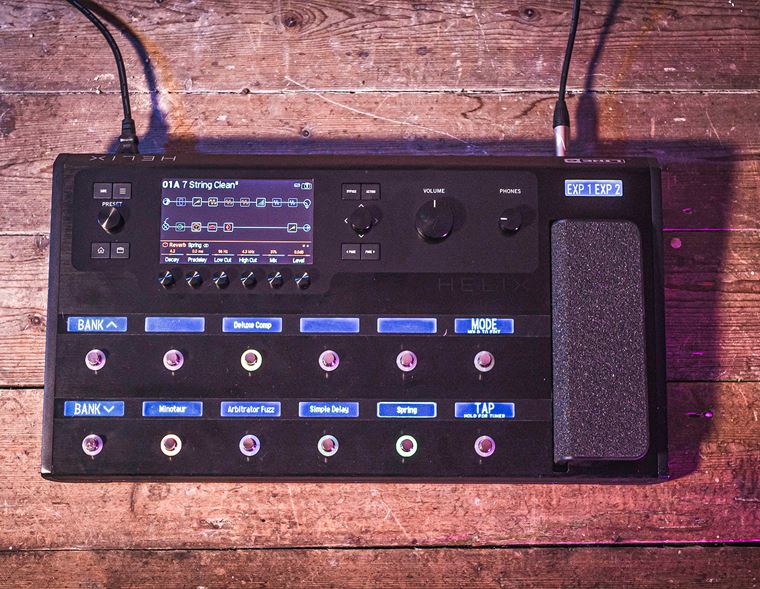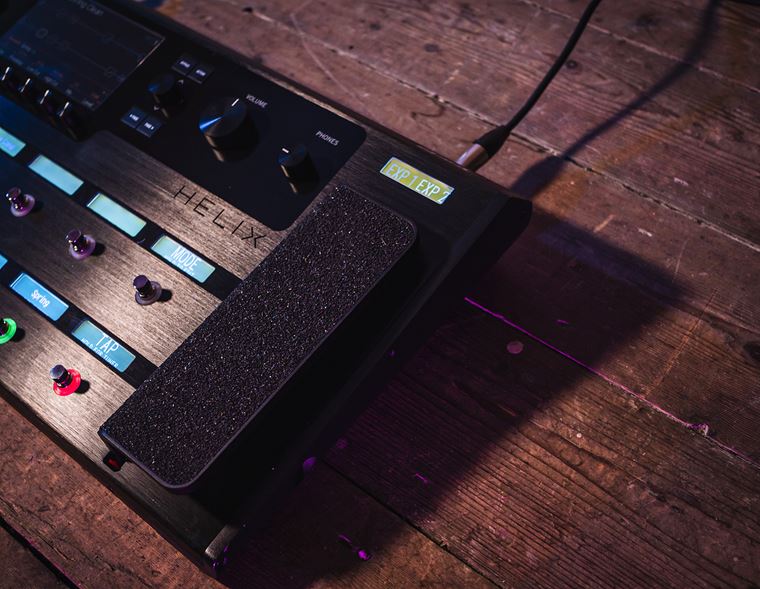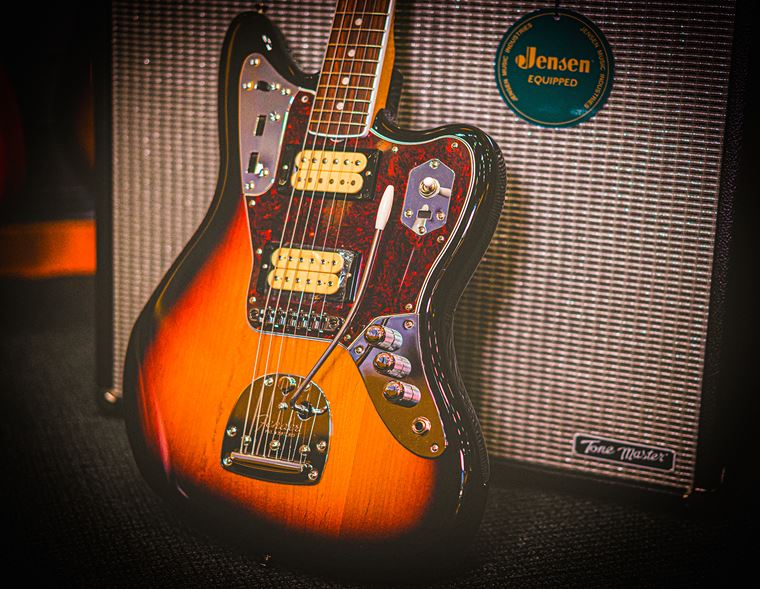What Cables Do I Actually Need as a Musician?
How many cables do you have in your gig bag or practice area?
Cables are one of those necessary things that we maybe don’t spend too much time thinking about until we need them. Is it just us who feel we are forever tripping over cables but still need just one more for a certain job?
Are you relatively new to the guitaring life, and are a little unsure about what cables you need? Maybe you stare blank-eyed at the cable wall of your local guitarguitar, wanting to ask questions but either feeling sheepish about it or distracted by a nearby Gretsch/PRS/other shiny thing?
If any of these scenarios sound familiar, then please read on. We’ve collected together some cable-based questions and put them all here in one place, so you can hopefully have a quick read and walk away filled with knowledge you didn’t know you needed!
For the purposes of today's blog, we've opted to use Roland cables as our pictorial examples. Their quality is good, their range is wide and for us, it's a no-brainer to use them.
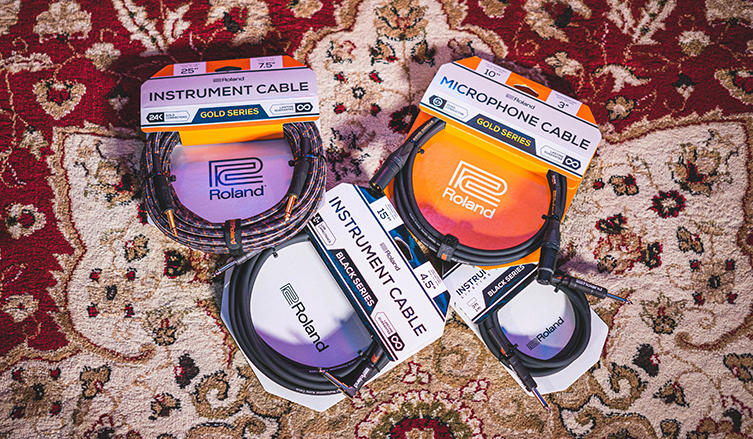
Are All Instrument Cables the Same?
Let’s begin here, because everyone seems to have an opinion on this, and the facts are actually pretty simple. Are all instrument cables the same? No, definitely not. Distilled right down to the basics, all cables operate in the same way, but there are a few things you’d do well to know when shopping for a new cable, some of which are perhaps less obvious than others. Let’s tackle some of these…
Does Cable Length Matter?
First off, and most obvious, is the length. Does length matter? In many ways, yes! You obviously need an appropriate length for the job in hand, so a 20 metre cable is probably overkill for home use, just as a 6 inch patch cable is hardly appropriate for connecting your guitar to your amp! We’re being facetious here, but it is worth bearing in mind that for every additional foot of length your cable is, you lose decibels of gain from your signal. In this context, gain is simply ‘volume’, which, more often than not translates to ‘tone’. Do you ever wonder why your sound at home is awesome, when you use the same guitar and amp as you’d do at a gig but also a much shorter cable? That extra length is eating up some precious tone, so do keep that in mind, and perhaps compensate with a buffer (a device that adds a little gain to the signal to boost it) or a higher quality cable, which transmits more signal and gobbles less gain.
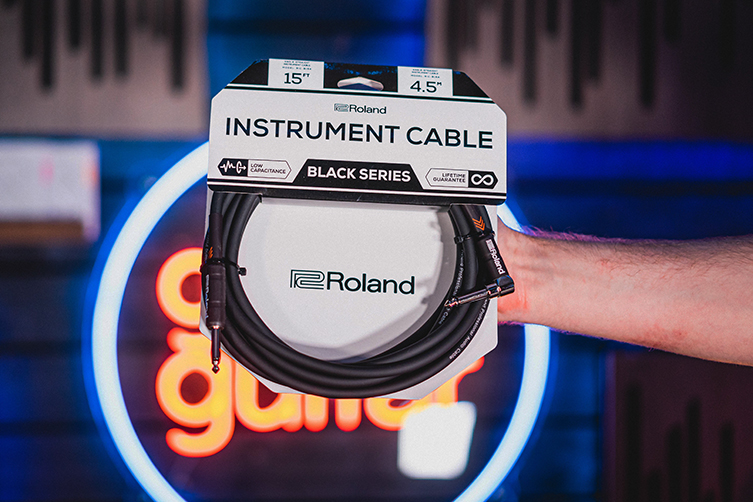
This is also true of pedal chains. If you are using, say, six pedals, then that’s six lengths of patch cable (the small 6 to 12 inch cables that are used to connect pedals in a chain) in addition to your two main cables (guitar to first pedal, and last pedal to amp). This can cause a noticeable deterioration of tone, so we’d recommend using patch cables that are as short as possible, and as transparent as possible. We’ll come back to ‘transparency’ soon. In the meantime, we recommend 3m (10ft, in guitarist terms) cables for home, and double that for gigs, unless you use lots of pedals. Why? Because, you’ll most often be less than 3m away from your pedals, so why use a long cable? Use a longer one from your last pedal to the amp, by all means, but going short from your guitar to first pedal is a good rule of thumb.
Do Expensive Cables Make a Difference?
Yes. Well, up to a point, yes. As with anything, paying more money is often associated with increased quality, and yet it’s no guarantee. So, what are you actually paying for with a cable, and what’s wrong with cheap ones?
Okay, ignoring cables with special/gimmicky features like buttons that can silence the signal or even weirder things (built-in tuners, we kid you not!), you’re generally paying for the following:
- Low Capacitance: capacitance is measured in picofarads (pf) and the less you have, the clearer and brighter your signal will be.
- Multi-Strand Core: more strands in the inner core equates to a stronger signal being carried. It’s a strength in numbers game here. The inner core is the part of the cable that’s actually carrying the signal.
- Good Shielding: Shielding protects what’s inside the cable (live electricity, your sound) from what’s outside (oxygen etc) and vice versa. The better the shielding is, the less extraneous noise your signal will have. Different companies have different ways of making shielding boasts (spiral shielding, reinforced shielding etc etc), but the higher density the shield, the less the cable will be susceptible to interference.
- Good connectors: many expensive cables use recognisable brand parts such as Neutrik for the connectors (the bit that actually goes into a device such as your guitar) and these are generally excellent, but plenty of brands like Roland, Ernie Ball and Klotz make their own connectors which are excellent, too.
- Gold: As the Ancient Egyptians knew, gold is an excellent conductor of electricity, so higher grade cables often use gold (24k and so on) connectors to get as much signal (tone) from guitar to amp as possible. It sounds like a dumb gimmick but the science is absolutely there! Transparency is the key here, so if your sound is darker (less treble or top end) with one cable than with another, the first cable is less transparent and you aren’t getting as much of your sound across.
One of the differences between this more expensive Roland RIC-G20 cable and its more affordable RIC B20 sibling is the use of gold in the connectors. The braided outer of the Roland BIC cable is more durable, too, which is a benefit that’s obvious.
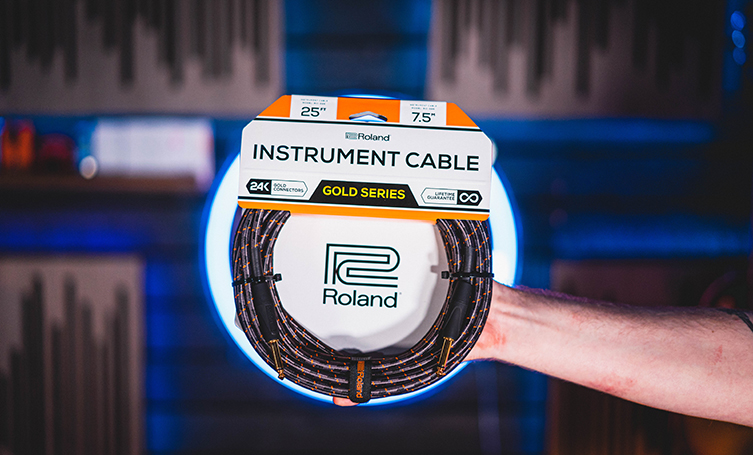
If your prospective cable choice scores high for those features, then we’d say you’re onto something! These features, however, don’t come without a small upcharge, so you will have to extend the budget slightly for a really good cable, That said, the difference between a very good cable and a top-priced one is often a tiny increment, so buying the most expensive one may only get you a slightly better performing piece of equipment than the (still high priced) one below it.
Weigh your options, but buy from the bargain bucket and you’ll soon face the heat of shame as your crackly signal spits and sputters to a pathetically silent death in front of your unimpressed audience. It’s just not professional, folks!
Buy the Best You Can Afford
Buying good quality cables is an investment, and maybe not the most exciting one. We understand that, but when shoddy cables let you down over and over - always when you need them the most - you’ll understand the confidence and peace of mind a good cable will earn you. It’s one less thing to worry about at a gig or recording session, and it puts you in the frame of mind of a professional musician. If it costs a few pints more, we reckon it’s money well spent.
Are cheap cables worth bothering with? Well, as with most things in life, it depends on your needs and expectations. If you are out gigging, then your cables will be put to a higher degree of stress than those that lead a homely life. As we’ve already said pretty bluntly, bargain bucket cables are the first things to die in any signal chain (swiftly followed by batteries), so if you’re out entertaining the masses, we don’t recommend cheaping out on cables (especially so if you have an amazingly expensive guitar as the embarrassment levels will be horrendous). If, however, you just need something close by to plug into a practice amp in the house now and then, a cheap cable will do for a while, as long as you factor in the loss of treble you’ll inherently suffer. In short, you will be a fair bit more for a nicer cable, but that nicer cable will last much longer and sound better, making your life more pleasurable.
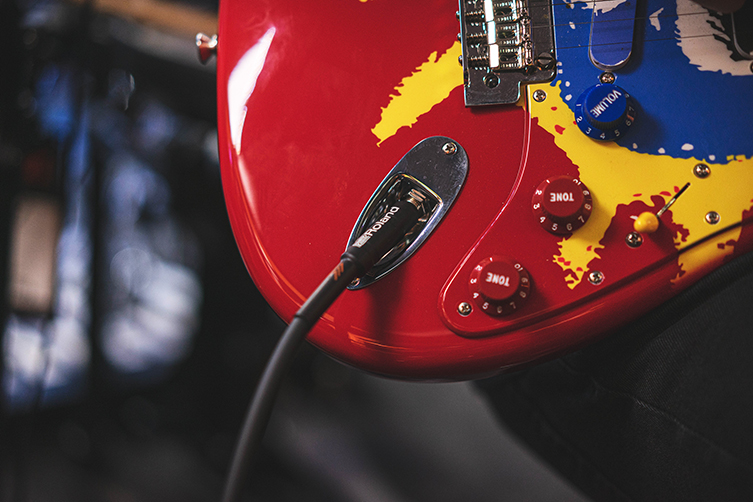
How Do You Know Which Cables are Good?
This is a simple question, but it’s not the easiest to answer, and here’s why. First off, most cables come in packaging that has to be pretty much obliterated before you can gain access to the cable itself. This doesn’t make testing one one before you buy it easy! Secondly, trying a cable in a store doesn’t exactly replicate your own playing situation, so you can never really tell how effective the cable will be in your own personal context.
With all this in mind, it makes sense to get familiar with those terms we spoke about earlier (shielding, multi-core wire etc) and balance your options. Some cable choices will appeal because of superficial things like colour, but that’s not necessarily a thing to ignore, either. Put it this way: if you choose a braided cable (the outer coat is made of patterned material rather than plastic/synthetic rubber) such as the Roland BIC Series, you’ll be at a distinct advantage at a gig where everyone else has generic black cables! Identifying your gear is important when doing a changeover between sets, and the number of times we’ve had our cables accidentally taken by another band is staggering! Bear this in mind, because those fun colours aren’t just there to attract you in the store!
Yes, But How Do I Know if the Cables are Good?
But how to tell if such cables are actually good? Well, as we say, check the packaging for details, and see if the store has a demo cable to try in a similar style. Trusted brands mean something here: cabling from top brands like Roland, Planet Waves, Ernie Ball are all safe choices that have been tried and tested for many years. Many of these brands offer different ranges of cabling, from better value cables to more premium choices. Go with what we said earlier (expensive cables offer do make a difference, but that difference may not be hugely important to you) and you should be okay here.
If you are able to A/B a selection of cables, make sure everything else about your test is the same: same guitar (with same knob and selector settings), same amp with the same settings, and same room. Now listen out for strength of signal, high end and low end of the sound, and assess which one sounds best to your ears. If they all sound the same, try choosing a cable from a different price bracket (either much cheaper or much more expensive) and see if you can tell comparative differences. That way, you’ll actually hear the difference, rather than relying on some blog you read online, right?
It hopefully goes without saying that any noise or interference should be investigated to make sure it’s not the guitar that’s the problem. Plug in another guitar and see how it fares. If the noise is gone, the guitar had a problem. If the noise persists, it’s the cable! Pass! Onto another!
What are the Different Cable Types?
Here’s a brief look at some of the most often-used cables. There are loads more, but as a guitar-focused musician, these are the ones you’ll most often run into. Cables can have combinations of different connectors too, such as a ¼” jack at one end and a 3.5mm minijack on the other. We’ll not include these hybrids here, but just note that whatever your connection needs may be, there’s a likely chance you’ll find a suitable cable!
We won’t bother mentioning USB cables here, since you definitely know about them already. Suffice to say, every musician should carry one or two with them at all times!
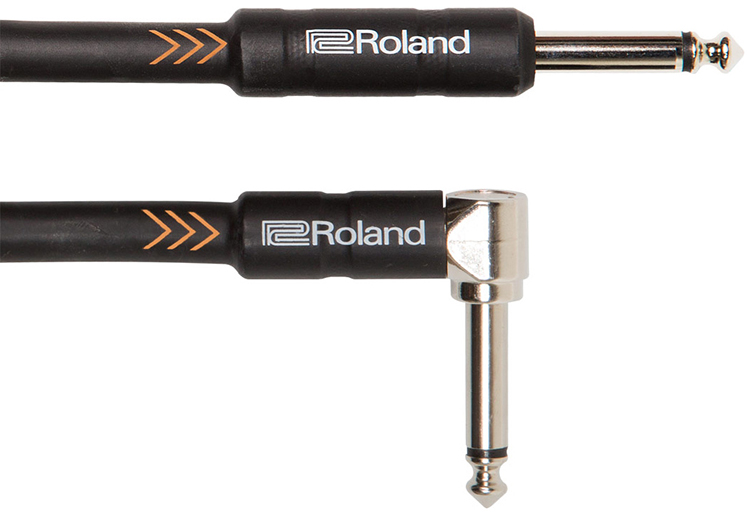
¼” jack: this is the standard cable you’ll use to plug your guitar to your pedals and/or amplifier. Whether the connectors are straight or right-angled (for use with guitars like Gibson SG’s or 335’s, where the cable connects on the face of the guitar rather than the side), the function is the same. Patch cables are just very small versions of regular ¼” cables, for the main part. Patch cables with smaller/different connectors exist, mainly for the benefit of synth players who are into Eurorack modules, but the rest of the music instrument world doesn’t seem to need these too often.

TRS ¼” Jack: Guitarists don’t often have to bother with TRS cables, but it’s good to know the difference. Standing for Tip-Ring-Sleeve, TRS cables look similar to normal ¼” jack cables except the connector has an additional black ring around the jack. This means the cable is ‘balanced’: there are two identical signals sent along the cable, along with a separate ground signal. TRS is also known as a ‘stereo jack’ for this reason, even though that’s not always technically the case. TRS cables are used in the production world, as well as with synth gear.

XLR Cables: also known as ‘mic cables’, these distinctive cables are used to carry a balanced, high output signal. XLR cables are most often used with microphones but digital modellers like the LIne 6 Helix and the BOSS GT 1000 also have XLR outputs. Why? Well, if you’re going into a PA system, these cables will give you the clearest signal and the least noise.
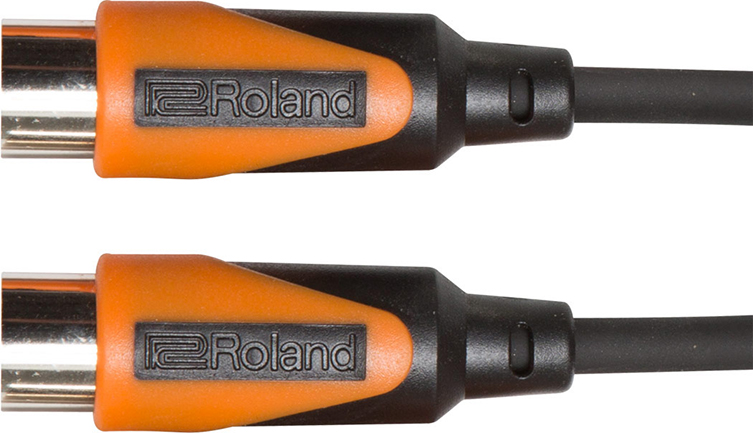
MIDI Cables: MIDI stands for Musical Instrument Digital Interface. Invented in the early 80s by Roland, MIDI was and still is an effective way to manage data between devices. It’s main use is to sync up various bits of keyboard gear, and we’re talking more about ‘commands’ than anything else. For example, connecting a drum machine and a keyboard allows both of them to share a tempo, and for a tempo change on one device to automatically change on the other device too.
Guitarists don’t often see MIDI being used in their rigs, but it’s actually very useful to anyone with rack gear or digital modellers. Again, it’s about function, so you’ll see MIDI foot pedals being used to switch patches on an effects unit, for example.
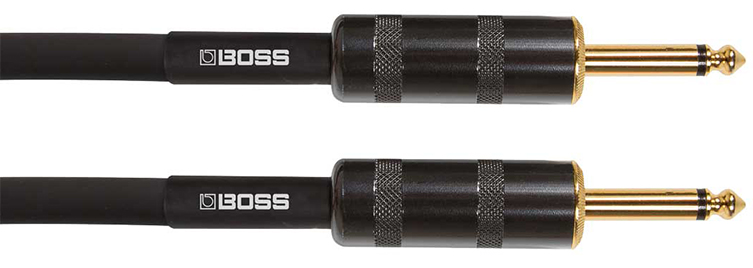
Speaker Cables: speaker cables are used to connect amp heads with speaker cabinets. Whilst they often (but not always) have regular ¼” jack connectors, it’s the actual cable itself that’s different. You’ll find speaker cables to be thicker than standard instrument cables. This is because they need to handle a much bigger signal, so the inner wire needs to be physically larger, and the shielding needs to be that way, too.
Please don’t be one of those people who connects their nice amp head to their nice expensive cab with a cheap little ¼” jack instrument cable! It’s not up to the task and you’ll regret it!
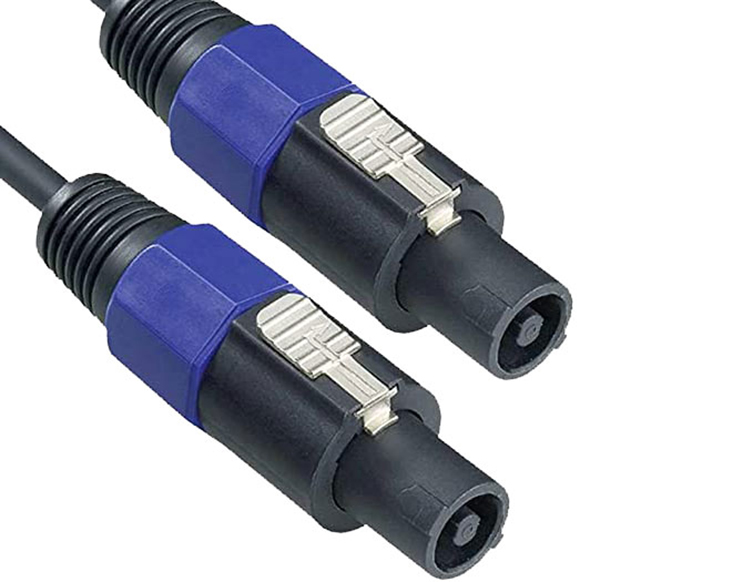
Another type of speaker cable uses a connector called Speakon. These are almost exclusively found on bass rigs, where the very frequencies being blasted are enough to fire normal ¼” jack connectors back out of the cabinets! Speakon cables lock in place with a turn, so no amount of subsonic vibration can dislodge them.

Minijack: this is what your headphones used to use before everything went Bluetooth. These little mini connectors are still used in lots of equipment, for example smaller synths and headphone amps (like the Fender Mustang Micro). Cables with minijack connectors can be converted to ¼” jack connectors by using what’s routinely referred to as ‘small to big jack’ converters. This is not their official name of course, but most shop staff will understand you!
What Cables Do I Need?
For our final segment, we’ll briefly run through how many cables you might want to be packing to your next performance. If you haven’t opted for brightly coloured cables, make sure you do something (non-invasive) to them so you can identify your own cables at a gig. We recommend either a few wrappings of coloured electrical tape (do a few colours in the same order to make things obvious for yourself) around each end close to the connectors, or a wrapping of silver gaffer tape with your initials written in sharpie on top.
Guitarist: You need three good quality ¼” jack cables (guitar to pedal, pedal to amp, spare) and enough patch cables for each pedal you use, plus another patch cable as a spare. Cable one (guitar to first pedal) should not be more than 15ft unless you are playing big venues. Cable two (last pedal to amp) should be AT LEAST 20ft. You won’t need much longer, but any less is a mistake, trust us.
Using a head and cab? Definitely bring a speaker cable. It’s unreal how many venues/other players don’t know to use a proper speaker cable. Even if it’s not your amp, if you are using it, then be the person who uses it properly. Power off before disconnecting, as always!
Digital guitarists, consider XLR cables (one for mono, two for fancy stereo output) instead of typical ¼” jacks as your main output cables for better sound and less noise. Players who use FX loops will need up to two normal ¼” jack cables for their needs, too.
Bassist: Same as above, but you may need to account for Speakon cables if you are using an amp with such connections. Unlike guitar amps, there is no substitute for Speakon cables, so at least you don’t have to double check a borrowed rig before playing. If your fellow guitarist is a poser, please bring an extra 20ft cable. In fact, you already know to do this, don’t you? Bass players are great.
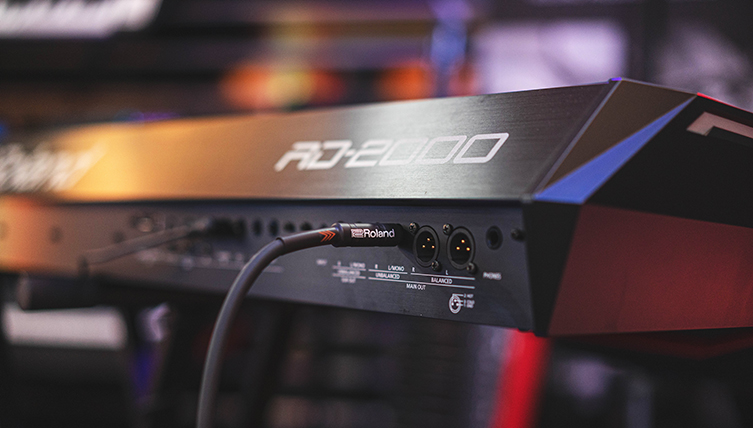
Keyboard player: This is much harder to advise, given how different each keyboard player’s rig can be. Some players need only one keyboard and a pair of ¼” jack cables for their stereo output, whereas others show up with a workstation, two analog synths, some outboard gear and an extra controller! That’s before factoring in pedal units and extra gizmos like Kaoss pads and such! We’d advise doing a ‘dry run’ a week before your gig: connect everything and assess what’s missing. Double up on ¼” jack cables and make your MIDI cables longer than you need them. Why? Length won’t affect the sound of MIDI since they transfer a bunch of data, and you’ll ALWAYS find another use for them that requires a foot or two more length than you have.
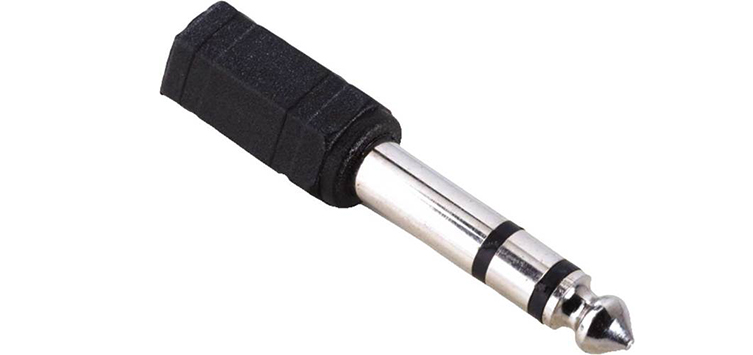
Every musician: keep a minijack to ¼” adapter in your gig bag, case or wallet. Why? At some point you will absolutely need one, for a reason that you’d never have thought about, and you’d regret not having one handy. It’s a couple of quid, so just keep one around where it will inevitably prove to be a good idea.
Cables for All Your Needs
We hope this little guide has helped you through some of the more significant queries surrounding cabling. As always, you’ll have specific questions on your own, so remember you can always talk to our staff in any guitarguitar store! They are all trained and ready to help you, as are our staff members (not bots) on the chat window that pops up here on the site. If there’s something you need to know, ask us!


